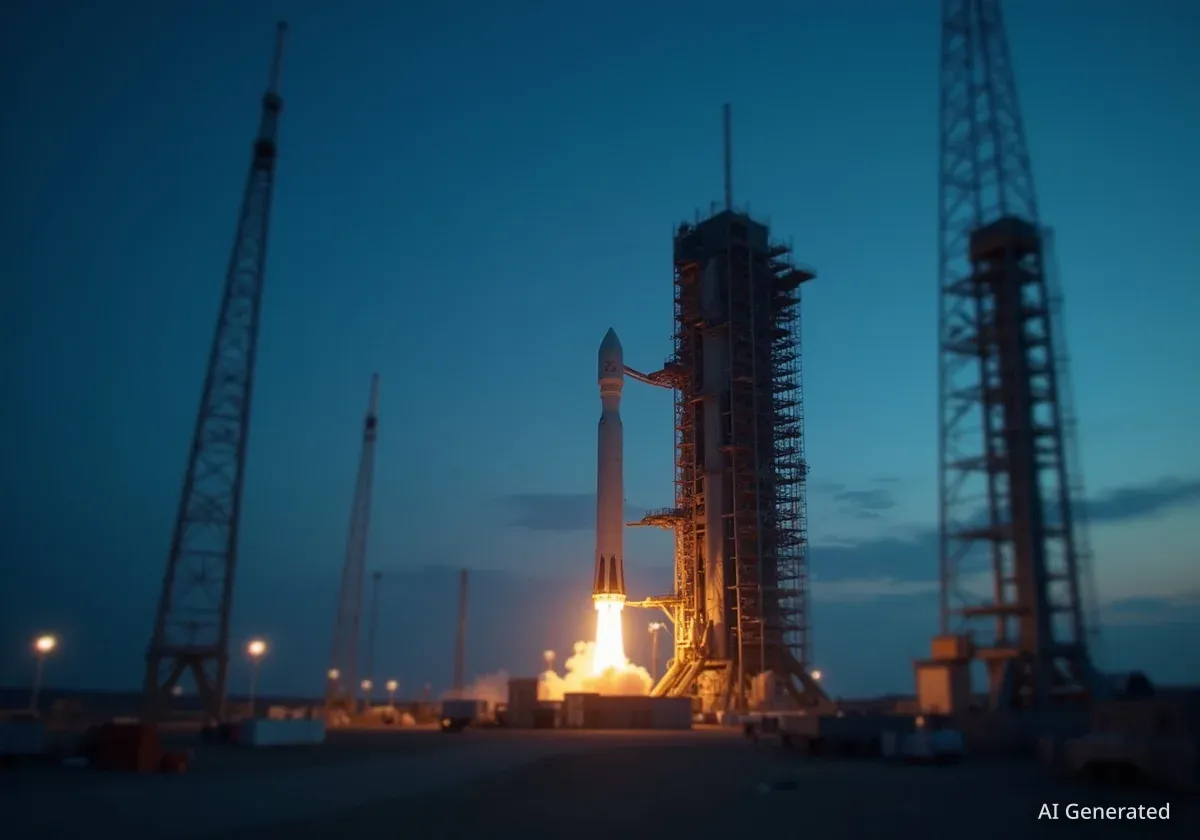The operational status of NASA's Juno probe, a long-serving spacecraft orbiting Jupiter, is currently unknown following the expiration of its mission extension on September 30, 2025. The date coincided with a U.S. government shutdown, leaving NASA officials unable to confirm whether the probe is still active or has been powered down.
Key Takeaways
- NASA's Juno mission extension officially ended on September 30, 2025.
- A U.S. government shutdown began on the same day, preventing NASA from providing updates on the probe's status.
- Juno is not considered an "excepted activity" and may not receive funding or operational support during the shutdown.
- Losing Juno would create a five-year data gap in dedicated Jupiter system observation until the Europa Clipper mission arrives in 2030.
A Mission of Discovery Faces an Abrupt Halt
NASA's Juno spacecraft has been a cornerstone of planetary science for nearly a decade. Launched in August 2011, it successfully entered orbit around Jupiter in July 2016. Its primary objective was to study the gas giant's interior, atmosphere, and powerful magnetosphere, providing unprecedented insights into the formation of our solar system's largest planet.
Originally planned for a 20-month science mission, Juno's exceptional performance and valuable data led to multiple extensions. The most recent, approved in 2021, extended its operations through September 30, 2025. This extension also broadened the mission's scope to include detailed studies of Jupiter's faint ring system and several of its largest moons.
However, that critical date has now passed. With the U.S. government in a shutdown due to a lapse in funding, the future of the multi-billion dollar probe is uncertain. NASA cannot legally operate or communicate about missions that are not deemed essential, leaving scientists and the public in the dark.
Juno Mission Timeline
- August 2011: Launched from Cape Canaveral, Florida.
- July 2016: Entered orbit around Jupiter.
- 2018: First mission extension approved.
- 2021: Second major extension granted, funding operations until September 2025.
Government Shutdown Halts Communication
During a government shutdown, federal agencies like NASA must cease all non-essential activities. According to established contingency plans, only missions classified as "excepted activities" can continue. These are typically operations required to protect life, property, or national security, such as managing active spacecraft like the International Space Station or tracking potentially hazardous asteroids.
Juno's science mission does not fall into these protected categories. Furthermore, the President's fiscal year 2026 budget proposal did not include funding for Juno, suggesting its continuation was not considered a high-level priority before the shutdown. This makes its operational status particularly vulnerable during the funding lapse.
In response to inquiries, NASA officials have been unable to provide specific information. A statement from the agency noted that it is "currently closed due to a lapse in government funding." In an earlier email, NASA Planetary Science Division Media Lead Molly Wasser confirmed the mission's extension to September 2025 and stated, "Regarding the future of the mission, NASA will abide by the law."
"NASA is currently closed due to a lapse in government funding … Please reach back out after an appropriation or continuing resolution is approved."
An Expanding Scientific Legacy at Risk
The 2021 mission extension transformed Juno from a Jupiter-focused probe into a full-system explorer. This new phase allowed the spacecraft to conduct close flybys of three of the four Galilean moons: Ganymede, Europa, and Io. These encounters have provided invaluable data on the moons' geology, icy shells, and volcanic activity.
Lori Glaze, who was NASA's planetary science division director in 2021, commented on the significance of this expanded role at the time. She noted that by extending its goals, the Juno team would "start tackling a breadth of science historically required of flagships." The data collected has been crucial for planning future missions, most notably the Europa Clipper.
Supporting Future Exploration
Juno's observations of the moon Europa have provided vital information about its radiation environment and surface characteristics. This data is being used to refine the mission plan for NASA's Europa Clipper, which launched in October 2024 and is set to arrive at Jupiter in April 2030 to search for conditions that could support life.
The Risk of a Data Void
The potential deactivation of Juno would create a significant gap in our direct observation of the Jovian system. Without the probe, scientists will lack a dedicated instrument at Jupiter for five years until Europa Clipper begins its science operations in 2030. This pause in data collection could slow scientific progress and leave many questions raised by Juno's own discoveries unanswered.
The spacecraft has already far outlasted its original design life, providing a wealth of information that has reshaped our understanding of gas giants. Scientists had hoped it would continue to operate, providing a bridge of continuous observation until the next generation of probes arrived. For now, the fate of one of NASA's most successful planetary missions remains tied to political and budgetary decisions on Earth.





